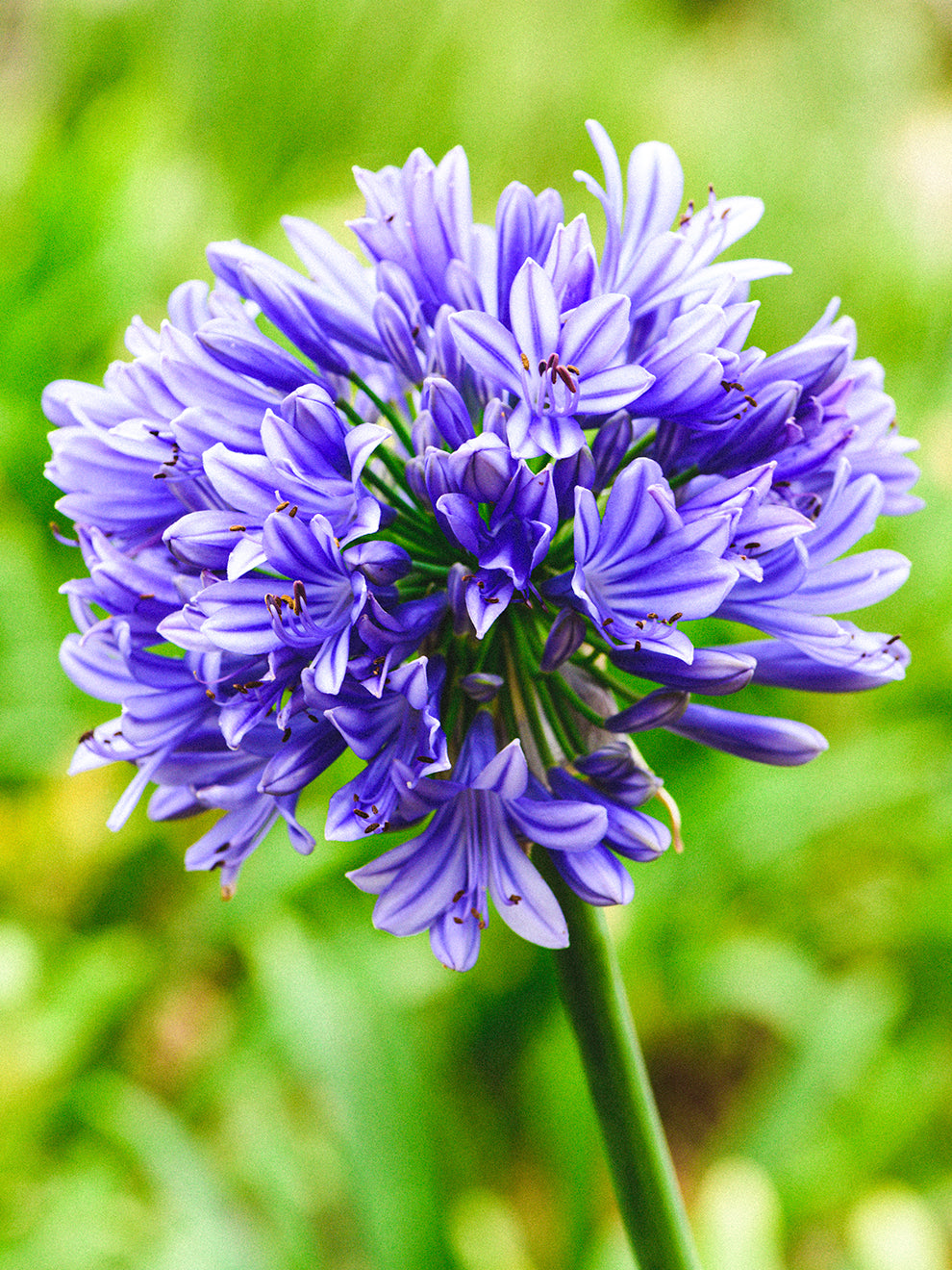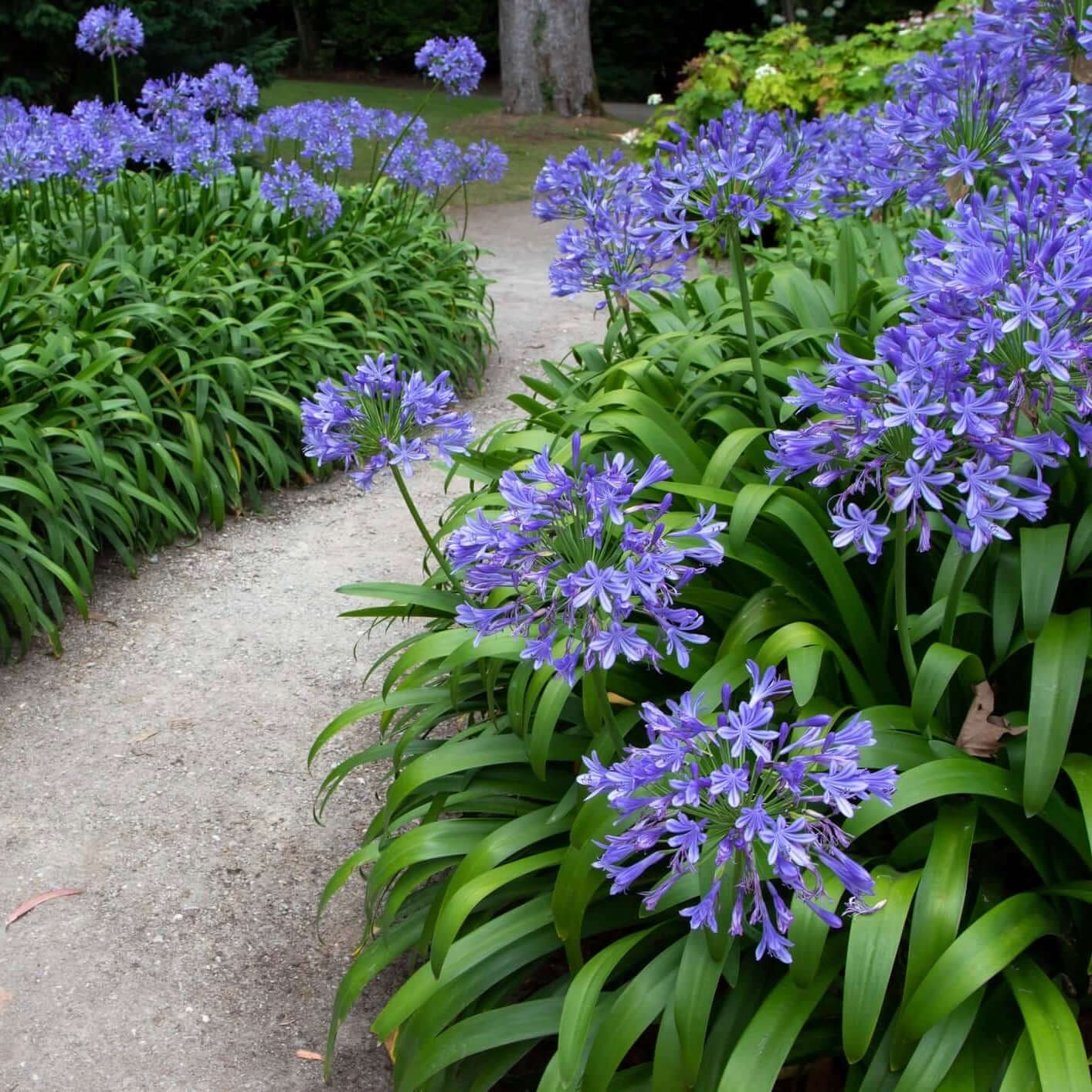Sensational Agapanthus: Enhancing Your Garden's Elegance
Sensational Agapanthus: Enhancing Your Garden's Elegance
Blog Article
Mastering the Art of Agapanthus Care: Crucial Steps for Healthy Growth and Vivid Blooms
In the realm of horticulture, the cultivation of agapanthus stands as a satisfying venture for those that seek to nurture these stylish blooming plants. From choosing the appropriate variety to grasping trimming methods, the trip towards growing flourishing agapanthus plants is complex and holds the key to unlocking the complete possibility of these organic treasures.

Choosing the Right Agapanthus Selection

When selecting the right Agapanthus range for your garden, think about factors such as climate suitability, bloom color, and development routine. Furthermore, think about the environment in your region to guarantee the Agapanthus variety you select can prosper in your specific problems. Comprehending the growth habit of different Agapanthus selections is essential for correct placement within your garden.
Perfect Growing Conditions
Taking into consideration the optimum environmental needs is necessary for effective Agapanthus farming. Agapanthus thrives in well-draining soil with a slightly acidic to neutral pH degree. When growing, choose a place that gets complete sunshine to partial shade. In hotter environments, providing some mid-day shade can stop scorching of the leaves. Agapanthus plants are delicate to cold temperatures and ought to be shielded from frost during winter season.
To ensure healthy and balanced development and dynamic flowers, plant Agapanthus bulbs at a deepness of concerning 2-4 inches and space them 8-12 inches apart. Including natural matter, such as garden compost, to the dirt can improve drainage and fertility, advertising durable origin development. Mulching around the base of the plants assists maintain wetness and suppresses weed growth. Regular watering is essential, specifically during the growing season, to keep the dirt regularly moist however not saturated.
Watering and Fertilizing Tips
Keeping proper wetness levels and providing vital nutrients are crucial aspects in the treatment routine for Agapanthus plants. When it comes to sprinkling Agapanthus, it is important to strike an equilibrium. These plants choose constantly damp dirt yet are prone to root rot if overwatered.
Fertilizing Agapanthus is essential for advertising healthy and balanced growth and respected flowers. Apply a well balanced fertilizer, such as a 10-10-10 formula, in the early spring as new development emerges. Repeat this application every 6-8 weeks throughout the expanding season. Stay clear of excessive fertilization, as it can lead to lush vegetation at the cost of blossoms. Constantly adhere to the producer's instructions for proper dilution and application techniques. By complying with these watering and fertilizing pointers, you can guarantee your Agapanthus plants thrive and produce vibrant, resilient blossoms.
Trimming Methods for Agapanthus
Trimming Agapanthus plants at the ideal times and with proper methods is crucial for keeping their health and wellness and advertising optimal growth and blooming. The ideal time to prune Agapanthus is in late winter months or very early spring prior to brand-new development emerges.
Deadheading invested blossoms can likewise redirect the plant's power right into creating even more blooms rather than setting seeds. If you want to collect seeds for breeding, leave some flowers to mature and dry on the plant.
Keep in mind to make use of clean, sharp devices to make accurate cuts and decrease the threat of introducing diseases. Agapanthus. Normal trimming will help maintain your Agapanthus looking neat and healthy while ensuring a bountiful screen of beautiful blooms
Taking Care Of Typical Parasites and Conditions
After guaranteeing proper pruning methods for Agapanthus, it is necessary to resolve continue reading this typical bugs and illness that can affect the wellness and vitality of these plants. Agapanthus plants are have a peek here generally sturdy yet can still come down with certain issues. One usual pest that influences Agapanthus is the Agapanthus gall midget. This small, orange fly lays its eggs in the foliage, bring about distorted development and flower buds that fail to open up. To battle this bug, prune and damage any damaged plant components and consider making use of insecticidal soap.
Furthermore, Agapanthus plants can experience from origin rot if they are planted in poorly draining soil. By being attentive and taking prompt activity versus illness and pests, you can assist your Agapanthus plants flourish and generate vivid blossoms. Agapanthus.

Conclusion
Finally, mastering the art of agapanthus treatment entails picking the appropriate selection, providing perfect planting problems, proper watering and fertilizing, suitable trimming strategies, and dealing with common parasites and conditions. By following these essential steps, you can helpful hints make certain healthy and balanced growth and dynamic blooms for your agapanthus plants. Remember to on a regular basis check and preserve your plants to advertise their overall well-being and long life.
To make certain healthy development and vivid blooms, plant Agapanthus bulbs at a depth of regarding 2-4 inches and room them 8-12 inches apart. By complying with these watering and fertilizing tips, you can guarantee your Agapanthus plants flourish and produce dynamic, long-lasting blooms.
One usual insect that impacts Agapanthus is the Agapanthus gall midget. In addition, Agapanthus plants can suffer from root rot if they are grown in inadequately draining pipes dirt. By adhering to these important actions, you can make sure healthy and balanced growth and dynamic flowers for your agapanthus plants.
Report this page